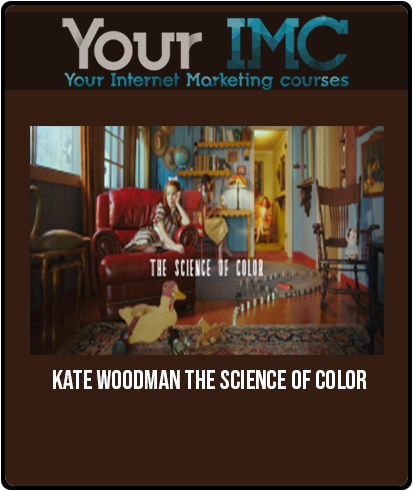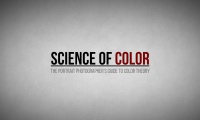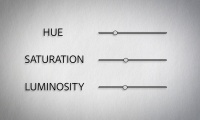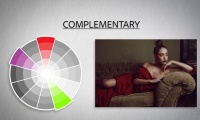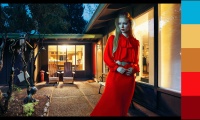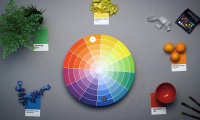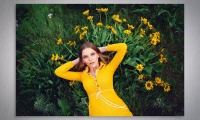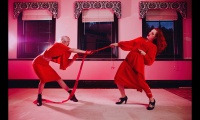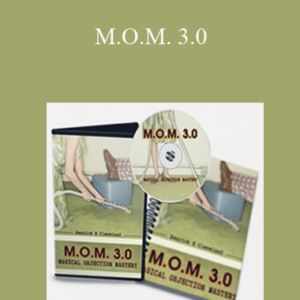Kate Woodman – The Science Of Color

Kate Woodman teaches how to take control of color
| In their quest for better images, photographers often overlook the importance of color. Kate Woodman breaks down the science of color in photography and will show you why you need to make color a driving force behind all of your image making.As photographers, we learn to craft and manipulate light. In its simplest form, color is just another way of seeing light. By taking a scientific approach to color in photography and analyzing the theory behind it and how it affects us, we can take control of color the way we do with light.
We can use color in photography to create a better story utilizing emotional cues, enhance our storytelling for the viewer, and invoke emotion to manipulate our audience to feeling a certain way. An essential course for portrait photographers. Understanding Color in PhotographyBy understanding color balance, color harmonies and how to manipulate color, Kate will show you how you can control mood and emotion for effective storytelling. In this color photography tutorial Kate Woodman breaks down the science of color to it’s simplest form: light. Kate introduces the basic properties of color like hue, saturation, and luminosity. She then dives into color theory discussing color balance, color harmonies, spacial relationships, and how colors interact in imagery and in the real world. After a in-depth lesson on color in photography and the science behind it, you will see Kate photograph on location and in-studio, objectively planning and utilizing color to create specific emotions in her images. You will then see Kate take her images to post production as a final step in controlling and manipulating color effectively. By the end of the tutorial you will see and understand color like never before. As soon as you start noticing color in photography and in the world, you can take your work to the next level. |
Lesson Overview
- 01. Color Theory

Introduction to Color (1:47)Join photographer, Kate Woodman, on a journey of color in photography. Explore her interest in relationships, concepts, and ultimately great color work. Conceptualize color photography theory, through location and studio shooting, and intelligent retouching. Learn the Science of Color and bring intentional vibrance to your photographic portfolio.
The Purpose of Color (3:55)Learn the definition of color. Examine it as a wavelength of light and how we perceive the spectrum. Consider the psychological, emotional and even physical responses color photography can elicit from us. Examine the specific influence of the color blue.
Properties of Color (5:13)Expand upon the definition of color in photography by breaking down its individual properties. Define and visualize the properties of hue, saturation, and luminosity. Understand concepts such as tinting, shading, toning, low-key vs high-key imagery. Focus on the interdependent nature of color’s properties to better grasp how color works in photography. Examine the specific influence of the color brown.
Color Mixing (3:57)With the definition of color and its 3 main properties, examine the visible spectrum of light in the construct of a color wheel. Compare the RGB and CMYK color models. Define complementary, primary, secondary and tertiary colors. Examine the specific influence of green as it applies to color in photography.
Color Harmony (4:30)Define and understand the concept of Color Harmony. Visualize color comparing and contrasting monochromatic, complementary, split complementary, double split complementary, triadic, quadratic and analogous harmonies. Examine the specific influence of the color orange.
Harmony Example (7:00)After defining and examining some simpler analogies of color – its properties and harmonies, begin to examine photographer, Kate Woodman’s imagery. Test your ability to decipher color harmonies for yourself. Examine the specific influence of the color pink.
Color Balance (12:47)Understanding that the theory and science behind color can present complex and abstract concepts, explore a tangible analogy of color harmonies. Observe and visualize the relationship of color utilizing an actual color wheel to explore balance, saturation, harmony and compliment. Examine the specific influence of the color purple.
Luminosity Contrast (4:46)With an understanding of color contrast focus on the importance of luminosity contrast. Explore and visualize the relationship between color and luminosity. Examine the dimensional spectrum of color as it relates to luminance. Examine the specific influence of the color red.
Perception (6:21)Continue to build on your understanding of color by differentiating brightness versus lightness. Use specific examples from photographer, Kate Woodman, to contextualize brightness and lightness. Explore environmental imagery and see how color communicates weight, orientation, and dimension. Examine the specific influence of the color white.
Psychology (4:27)Study the ideas behind Resonance Theory. Begin to connect how we are intimately connected to the frequencies of color around us. Observe specific examples of imagery from photographer, Kate Woodman, to see what kind of emotional responses color can elicit. Examine the specific influence of the color yellow.
- 02. In Studio Shoot
- 03. On Location
Color at its core
Learn to build color into your images as the driving force for mood, emotion, and storytelling.

MEET YOUR INSTRUCTOR
Let our industry pro share their proven techniques and valuable insights to help you improve your craft.


Kate Woodman
Born in Darmstadt, Germany, Kate Woodman was brought up in Connecticut and currently calls Portland, Oregon home. A structural engineer by training, Kate developed her love of photography in 2011 while investigating earthquake damage in New Zealand. What began as a compulsion to document the environment expanded into a fascination for narrative storytelling, typically with a conceptual twist. Her engineering background serves her well in her photography, provoking a sense of balance and attention to detail and engendering a creative approach to the technical challenges of creating an image.



